Use:
1. The corrosion of protected and unprotected metal materials is affected by many environmental factors, which mainly depends on the type of metal material and the type of environment. It is impossible to design a laboratory accelerated corrosion test room that includes all environmental factors that affect corrosion resistance. Therefore, the laboratory test is designed to simulate the factors that play a major role in the corrosion of metal materials. This equipment is designed to simulate and increase the impact of the environment on metal materials exposed to outdoor atmospheres with salt pollution and accelerated corrosion. The equipment includes test methods for cyclically exposing specimens to salt spray, dry, and hot and humid environments. This equipment test is a comparative test, and the test results cannot predict the long-term results of the corrosion resistance of the same metal material used under these environmental conditions. However, this method can still provide valuable information on the relevant performance of materials exposed to salt pollution environments similar to the test conditions. Compared with traditional accelerated corrosion tests such as neutral salt spray test (NSS), acetic acid salt spray test (AASS), and copper accelerated acetic acid salt spray test (CASS), the biggest advantage of this equipment test is that it can better reproduce the corrosion occurring in outdoor salt pollution environments.
2. This equipment is suitable for accelerated corrosion testing of: metals and their alloys, metal coatings (anodic and cathodic), conversion coatings, anodized coatings, organic coatings on metal materials, etc.
Functional Overview:
The composite salt spray composite test room has the entire inner box space being corrosion-resistant. The inner box is made of corrosion-resistant materials and has excellent thermal insulation performance. In addition, the equipment also has the following functions:
(1) It has an emergency braking function. A brake switch is installed on the equipment. When an abnormal situation occurs, the equipment can be powered off by controlling the switch. (2) The equipment is equipped with corresponding system software. The software can run stably on the provided operating system. The software interface is in Chinese or English and has no service life limit. The software includes temperature change test, humidity, precision calibration part, and equipment self-test module part.
(3) The system software can record, automatically save, and optimize data in real time. The temperature-time, humidity-time and other curves can be drawn through software settings.
(4) The system software is equipped with a security protection parameter interface, and after the setting is completed, it is given priority during the test process to ensure the safety of the test.
(5) The system software can achieve the function of test data security protection. The software has an administrator function that can limit the operating permissions of general operators.
(6) The system software has the function of post-data processing, and can support the import of multiple data files, support data screening, and support arbitrary X-axis and Y-axis selection.
(7) The equipment has multiple functions such as high temperature, wet heat, drying, and salt spray, and can realize automatic cycle control or single function control, with simple operation and data management.
Product Details:
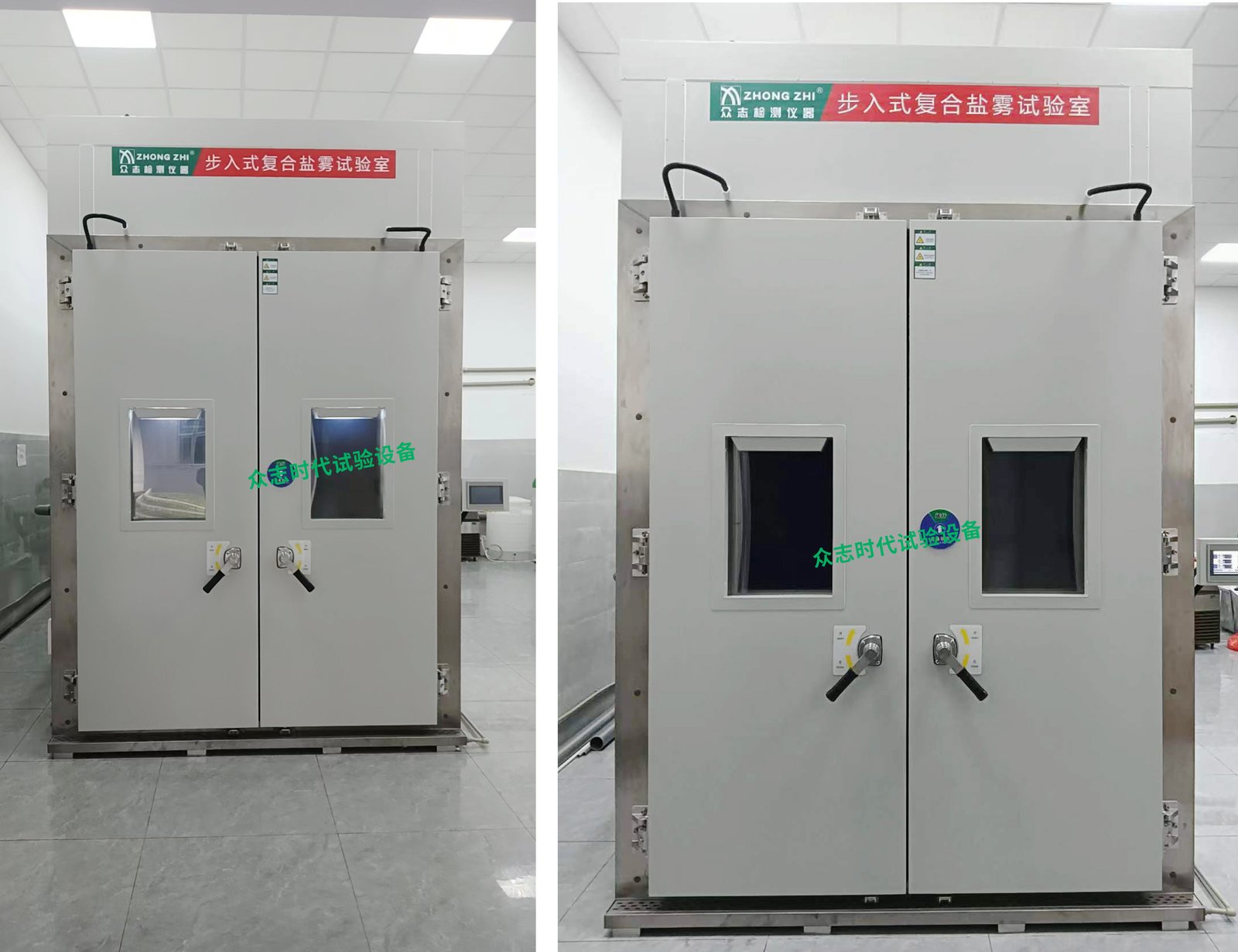
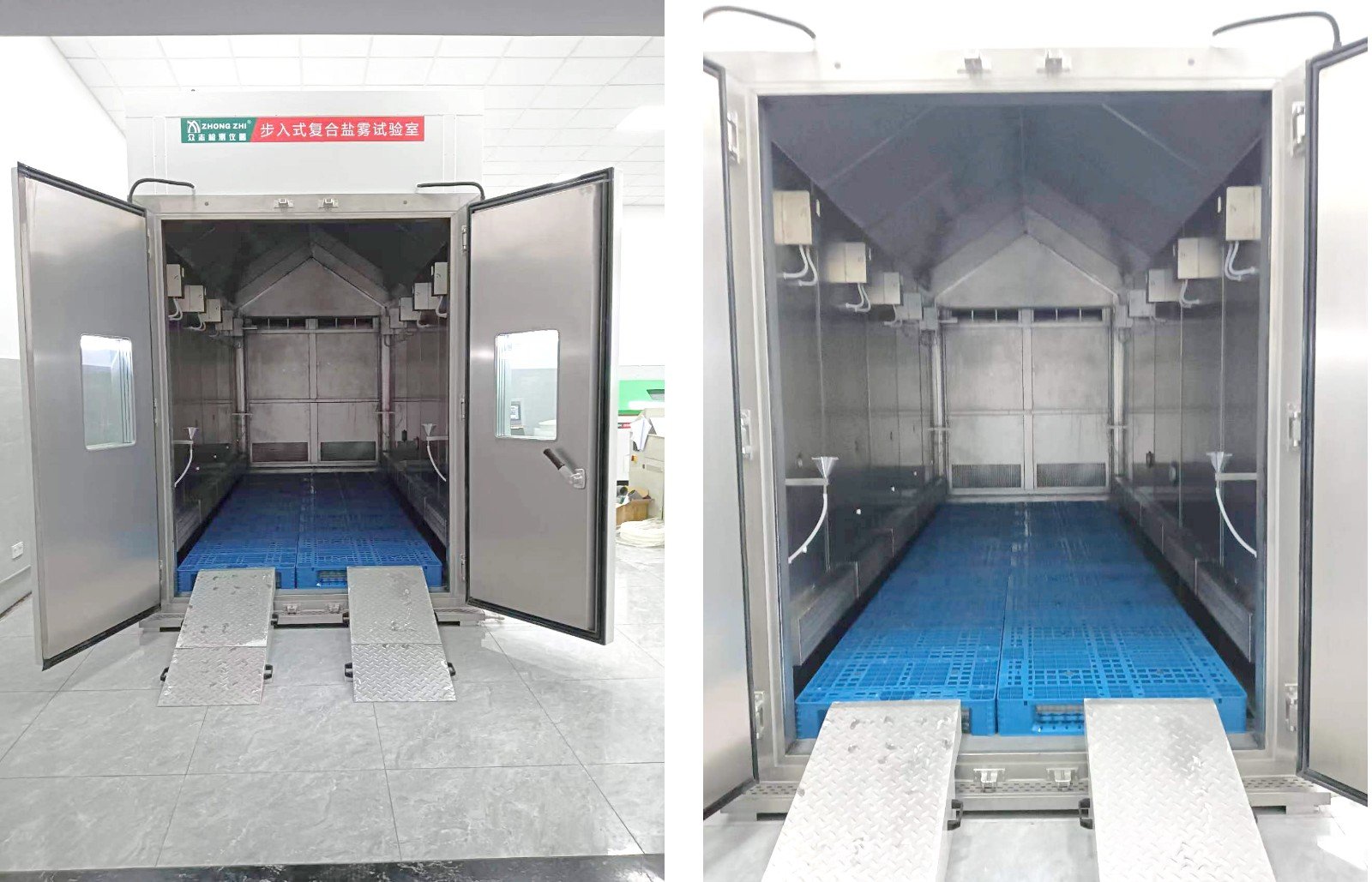
Major Specifications:
| Product name | Walk-in composite salt spray test chamber | |
| Product model | CZ – 24000D | |
| Nominal internal volume | 24m3 excluding top sloping roof volume | |
| Inner box dimensions (mm) | 2000×2400×5000 W×H×D (excluding sloping roof height) | |
| Outer box dimensions (mm) | About 2350×3360×6350 W×H×D | |
| Brine tank dimensions (mm) | Ф1000×H 1050 Volume 500L | |
| Net weight of equipment | About 5200kg | |
| Test environment conditions | Ambient temperature is +25℃, relative humidity ≤85%RH, atmospheric pressure is 86~106Kpa, and there is no sample in the test chamber | |
| Equipment function | Salt spray test mode and wet heat mode (including drying and wet heat) can be switched arbitrarily, and program combination test or single function test can be performed | |
| Control accuracy | Temperature resolution: 0.01℃
Humidity resolution: 0.1%R.H Temperature deviation: ≤±2.0℃ Humidity deviation: ≤+2-3%R.H when ≥75%RH; Humidity deviation: ≤±5%R.H when <75%RH; Temperature uniformity: ≤2℃ Humidity uniformity: ≥75%RH ≤+2-3%R.H; Humidity deviation: ≤±5%R.H when <75%RH Temperature fluctuation: ±0.5℃ Humidity fluctuation: ±2%R.H Note: Temperature uniformity and deviation are values measured under the condition of ambient temperature of +25℃, relative humidity ≤85%R.H and no sample |
|
| Noise | Less than 75db (Measured 1m from the front of the box and 1.2m from the ground) | |
| Function and parameters of salt spray test | Temperature range | Adjustable at ambient temperature ~ 55℃ |
| Salt spray precipitation | Adjustable at 1~3ml/(h·80cm2) (average value collected for more than 16 hours) | |
| Uniformity of salt spray precipitation | ((1.5±0.5)ml/(h·80cm2) (collected for more than 16 hours); | |
| Spray mode | Continuous/interval program setting is possible, with quantitative control function; | |
| Spray system | The filter installed in the salt water tank can be cleaned and reused repeatedly; each nozzle can fine-tune the angle, can be disassembled and cleaned; | |
| Salt water concentration | 5%±1% or specified value | |
| Salt water pH value | Neutral 6.5~7.2, acidic 3.0~3.2 | |
| Saturator temperature range | Adjustable at ambient temperature ~ 70℃; | |
| Spray pressure | 70~170Kpa | |
| Common alternating salt spray test conditions
Wet heat/dry mode |
Temperature range | 15~85℃ adjustable |
| Humidity range | 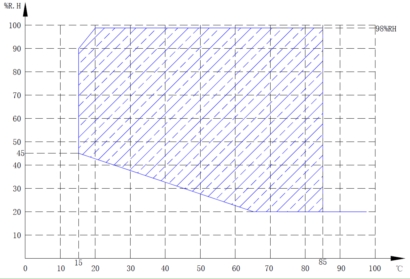
15~85℃, humidity control range 20%R.H~98%R.H (as shown in the figure) |
|
| Heating rate | 15→85℃≥3℃/min (under average no-load conditions throughout the process) | |
| Cooling rate | 70℃→15℃≥2℃/min (under average no-load conditions throughout the process) | |
| Common alternating salt spray test conditions | At 35℃ ambient temperature, 47℃ saturated barrel temperature, 5% salt water concentration spray test time 1min~999h can be set arbitrarily, then in the wet heat test temperature 40℃±2℃, relative humidity 93%RH±2%RH, test time 1min~999h can be set arbitrarily; cycle 1~999 times can be set arbitrarily. Then, place it in a standard environment with a temperature of 23℃±2℃ and a relative humidity of 50%RH±5%RH for 1min~999h, which can be set arbitrarily. | |
| Salt spray and dry alternating test | At 35℃ ambient temperature, 47℃ saturated barrel temperature, 5% salt water concentration, spray test time 1min~999h can be set arbitrarily, then switch to 15~30℃ temperature, relative humidity less than 50%RH, dry test time 1min~999h can be set arbitrarily; | |
| Salt spray, dry, wet rapid alternating test conditions | At 35℃ ambient temperature, 47℃ saturated barrel temperature, 5% salt water concentration spray test time 2h (equipment can control 1min~999h can be set arbitrarily); then switch to 60℃ ambient temperature within 30min, relative humidity less than 30%RH for drying test, test time 4h (equipment can control 1min~999h can be set arbitrarily); then switch to 50℃±2℃ temperature within 15min, relative humidity greater than 95%RH under hot and humid environment conditions, test time 2h (equipment can control 1min~999h can be set arbitrarily); then return to the first step of salt spray test within 30min; cycle 1~999 times can be set arbitrarily. The drying, wet heat and salt spray alternating process is as follows:
|
|
| Acidic atmosphere test conditions | a. 2h spray, 22h storage as a cycle, a total of 3 cycles
b. 2h spray, 7d storage as a cycle, a total of 4 cycles Spray deposition 1~3ml/(h·80cm2) (at least 16 hours of collection, take the average value); Spray solution, unless otherwise specified, spray solution is added in 4L distilled water or deionized water 11.9mg (6ul ) sulfuric acid (concentration 95% ~ 98%) and 8.8mg (6ul) nitric acid (concentration 68% ~ 71%), use dilute hydrochloric acid or sodium hydroxide solution to adjust the pH value of the test solution to 4.02 |
|
| Other test conditions | Can be used alone for NSS salt spray test, AASS acetic acid salt spray test, CASS copper accelerated acetic acid salt spray test, wet heat test, drying test, low temperature test, standard macroclimate environment test test conditions or other combined composite test conditions | |
| Meet the test method | DO160 E/F/G Salt Spray Test Requirements
GJB 150.11A-2009 Military Equipment Laboratory Environmental Test Method Salt Spray Test; GJB150.28-2009 Military Equipment Laboratory Environmental Test Method Acidic Atmosphere Test GB/T2423.18-2021/IEC60068-2-52:2017 Basic Regulations for Testing of Electrical and Electronic Products Kb: Salt Spray Alternation (Sodium Chloride Solution) GB/T2423.17-2008/IEC 60068-2-11-1981 Environmental Testing for Electrical and Electronic Products Part 2: Test Method Test Ka Salt Spray GB∕T10125-2021/ISO9227:2017 Artificial Atmosphere Corrosion Test Salt Spray Test GB/T 2423.3-2016/IEC60068-2-78:2012 Environmental testing Part 2: Test methods Test Cab: Steady humidity and heat test GB/T 2423.4-2008/IEC60068-2-30:2005 Environmental testing for electrical and electronic products Part 2: Test methods Test Db: Alternating humidity and heat (12h + 12h cycle) GB/T 31467.3-2015 Lithium-ion power battery packs and systems for electric vehicles Part 3: Safety requirements and test methods: Salt spray test; |
|
| Equipment meets the test method | GB/T5170.5-2008 Wet heat test equipment inspection method
GB/T 10587-2006 Technical conditions for salt spray test chambers GB/T 10586-2006 Technical conditions for humidity and heat test chambers GB/T 5170.8-2008 Environmental test equipment inspection method for electrical and electronic products Salt spray test equipment |
|
| Noise | Less than 75db (measured 1m from the front of the box and 1.2m from the ground) | |
| Power supply | AC (380±10)V (50±0.5)Hz three-phase four-wire + protective grounding | |

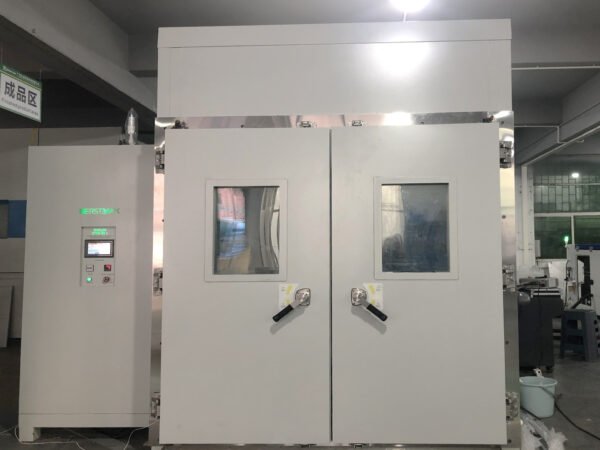
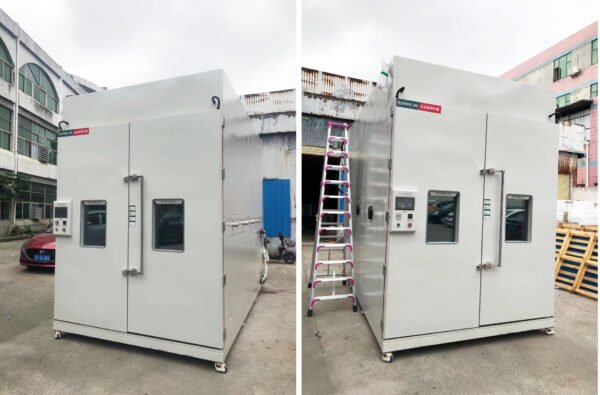
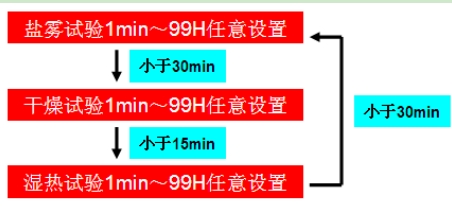
Reviews
Clear filtersThere are no reviews yet.